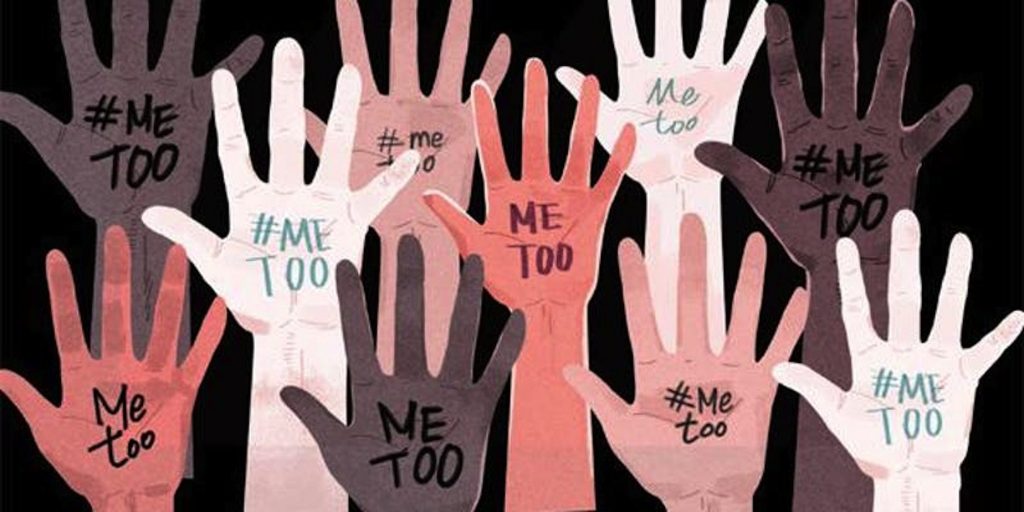
Intimacy within the arts/theatre reflection
Intimacy is the definition of any moment which conveys intimate physical contact. Within the arts industry, intimacy is often portrayed, whether that is intentional or not. It is vital that we who are in the arts world are aware of this; the sensitivity that surrounds this subject. There are many moments in my years at university where I have had to be intimate or witnessed intimacy on stage. Coming to the end of my final year, I have realised the importance of intimacy and the issues that surrounds it; how we all as theatre makers and performers have a role to play in ensuring that everyone present is comfortable, that we all know out boundaries. Linking this to the me-too movement, which was founded in 2006. This movement focuses on helping survivors of sexual violence, especially young women of colour from lower class communities. ‘The world’s first mass movement against sexual abuse, #MeToo took off from the law of sexual harassment, quickly overtook it, and is shifting cultures everywhere, electrifyingly demonstrating butterfly politics in action.’
The different types of physical contact include –
• Kissing (whether that is passionately or just a singular kiss)
• State of undressing
• Physical contact with the chest or genitals
• Simulated sex
• Portrayal of sexually traumatic events (whether is being shown on stage or spoke about in depth)
• Sexual violence
• Sexual manipulation
The five pillars of intimacy are guidelines that have been put in place, by Siobhan Richardson, to tackle intimate scenes for those of us who involved in the arts world. This ensures a safe space; to explore triggering subjects within the arts world. Whether that is being an actor on stage, being an audience participant, a facilitator etc. ‘Theatre in particular is making some strong headway toward creating a safer, more equitable environment for those on-stage. The movement has gained headway due, in part, to what is known as “intimacy training”.’
Context
• We as performers, theatre creators and audience participants must all be aware of the context of the scene and have an insight of the story that is going to be told.
• We should have the power to explore this in a way that feels comfortable for us; our boundaries being respected and understood.
• An example of this could be if somebody were to partake in a drama workshop and did not feel comfortable in giving someone a hug. Whether this is a trigger for trauma or that they would just prefer not to. Regardless of this it would be vital that their boundaries are respected; nobody within the workshop should cross the line that they have set.
Communication
• Communication is a general part of life; something that we all are responsible for. Within the arts world, it is important for us to communicate through conversations and checking up on each other.
• This way we understand who each other are; we can level with each other as individuals and be aware of individuals preferences and boundaries.
• An example of this would be having a group discussion at the end of each session. This way, people can express their thoughts and feeling and not feel judged for it.
Consent
• Consent is to be established by both parties; both have to agree on the situation taking place and feel comfortable. It does not work when one person is willing and the other isn’t; this would be violating that other person’s rights to say no.
Choreography
• Safe, repeatable choreography needs to be put in place that supports the storytelling by the intimacy director and the performers.
• It should be ensured that the choreography is performed as intended in rehearsal and performance, especially in the run.
• There will be moments where fight scenes and intimate scenes will be involved, it is important for performers to stick to what they have rehearsed.
• There are problems surrounding this; wanting to make the fight scene more difficult or the intimate scene more passionate. However, this would be over stepping boundaries and could potentially make one of th performers feel uncomfortable.
Closure
• It is important that there is closure at the end of the session; the personal and professional element clearly separated.
• This would be achieved by having some sort of moment at the end, whether that a closing moment or ritual, highlighting the end of intimate contact.
As I want to become a drama therapist, it is important that I know how to manage intimacy between me and different communities I work with. I need to have the understanding that intimacy will differ depending on community etc age group, the setting they are in, the different triggers. Intimacy in the arts is essential for my further understanding of becoming a facilitator. I must work with s variety of communities to grasp the boundaries will not be the same; I will have to adapt as a facilitator. Moving forward, I will make intimacy in the arts a priority; allowing boundaries to be respected. The safety of all participants is my main priority; I want everyone to be able to feel safe in my workshops and feel like they have freedom of speech, free will, personal preference and above all else comfortable in the environment. I will ensure that everybody is aware of sexual abuse and harassment in the workplace; how consent is a two-way streak. I hope to create a safe and comfortable environment for my participants, they are the main priority.
Bibliography
‘The world’s first mass movement against sexual abuse, #MeToo took off from the law of sexual harassment, quickly overtook it, and is shifting cultures everywhere, electrifyingly demonstrating butterfly politics in action.’
https://www.theatlantic.com/ideas/archive/2019/03/catharine-mackinnon-what-metoo-has-changed/585313/
‘Theatre in particular is making some strong headway toward creating a safer, more equitable environment for those on-stage. The movement has gained headway due, in part, to what is known as “intimacy training”.’
https://studybreaks.com/culture/reads/intimacy-training-theatre/